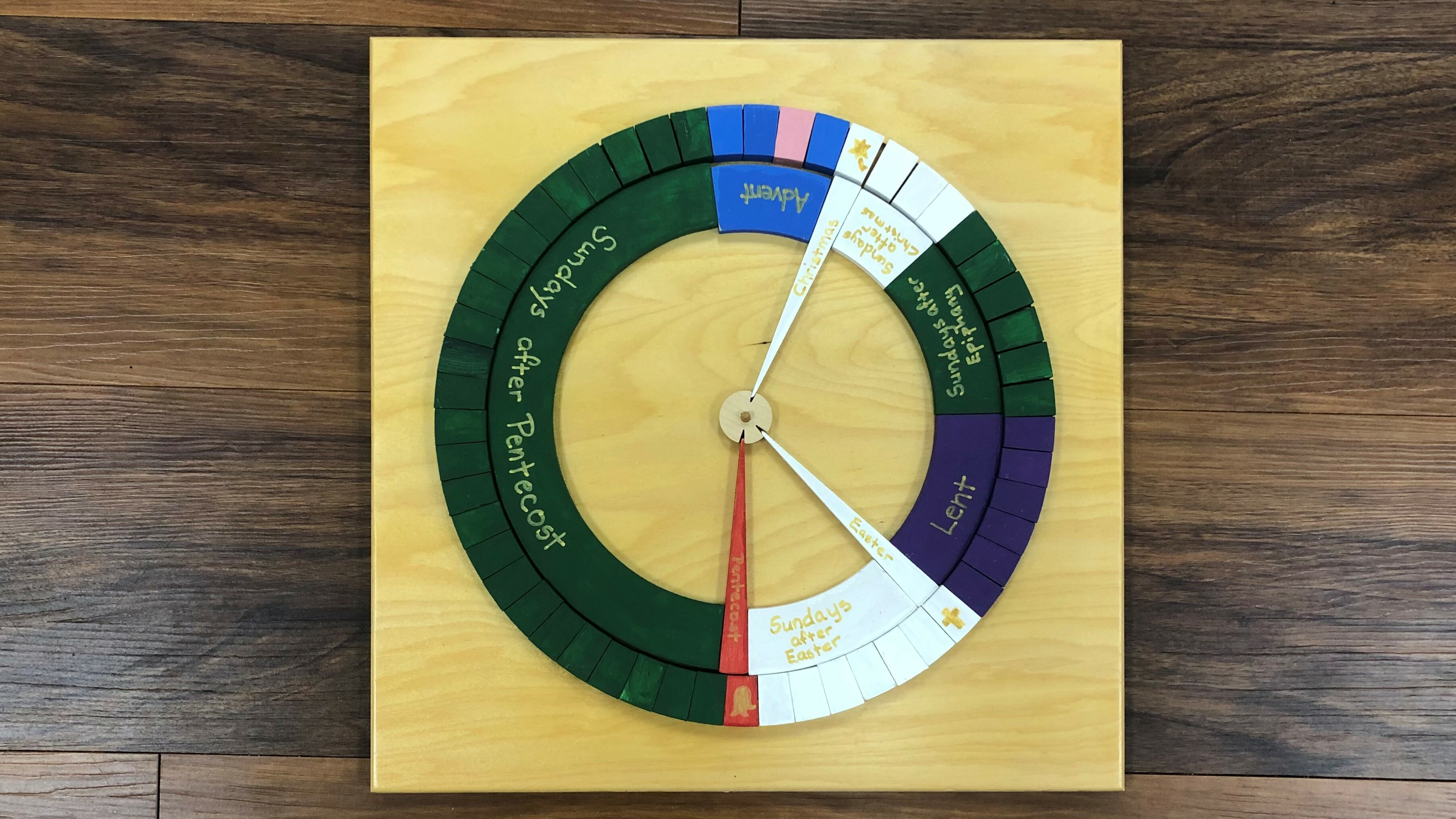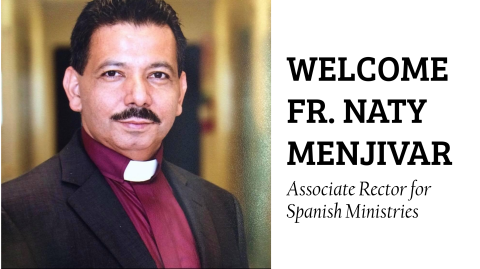On 5/30/2021 the Church entered a season of the liturgical year called Ordinary Time (May 30 - November 21, 20021.) This name is a bit confusing because we understand “ordinary” as common, plain, unimpressive, and even unimportant. In this context, the word ordinary comes from the Latin Ordinalis and it means ordered (as in a sequence: First, second, third, etc.) If you think about the seasons of Advent, Christmas, Lent, and Easter as highlights of Jesus’ life (the incarnation, birth, passion, death, resurrection, and ascension of Jesus.) Then, ordinary time contains the rest of the Jesus story. This is the longest liturgical season of the Church calendar (33 to 34 weeks,) and it will lead us straight to the feast of Christ the King, followed by the first Sunday of the Church year. The grand theme of this long season is growth, we wear green vestments and altar hangings, and we “bury our alleluias” (stop singing or saying them) until the Easter Vigil.
In order to fully understand Ordinary Time, it might be appropriate to say something about our liturgical calendar. Chronological calendars mark the beginning and end of the year, when major holidays take place, and when seasons begin and end. In the same way, the liturgical calendar marks the seasons of the Church year. We begin with the Season of Advent (November 28 - December 19.) The major theme of the season is preparation for the immediate (historical) coming of Jesus at Christmas, and the future coming of the Messiah at the end of days. We remember the preaching of John the Baptist in the wilderness, preparing the way for Jesus. We also remember Mary’s visit to her cousin Elizabeth (who would be the mother of John the Baptist.) Because this season is a season of preparation, we call it a penitential season and we wear the penitential color of purple. We prepare and wait with Mary for the birth of her son by placing a large Advent wreath in the altar area, right below the lectern. Every week we light a purple candle, which encircle the white birth candle of Christmas Eve. We also read extensively from the Gospel of Luke. The music, preaching, flowers, and decoration all have a flavor of joyful expectation similar to the preparation mothers-to-be do during the last trimester of their pregnancy.
From pregnancy, we move directly into the birth of Jesus in the Christmas Season (December 24 to January 6.) For several weeks we celebrate the events surrounding the birth of the Christ child: The young family’s march to Nazareth to register at the mandatory census, the stable scene and birth of Christ, the appearance of angels to the shepherds in the fields, the presentation of the baby at the Temple, the arrival of the Maggi, the young family’s trip to Egypt to escape King Herod, and a visit Jesus made to the Temple at the age of 12. The theme of the season is the birth of the Messiah, and we celebrate this birth by placing a large nativity scene in front of the altar, by lighting a Paschal candle every Sunday, and by wearing white vestments and altar hangings.
The arrival of the Maggi to visit the baby is called “Epiphany.” Therefore, we call the brief ordinary time that follows their visit, “Season after Epiphany.” (January 9 – March 1, 2022. In some calendars you will simply see “Ordinary Time.”) This period of growing up, about which we know very little, symbolizes the first 30 years of Jesus’s life, before his public ministry. If we knew more about what happened to Jesus between ages 12 and 30, most likely those stories would be presented at this point in the calendar year. But sadly, we don’t know much about Jesus’s early days. Instead, this season highlights the Baptism of our Lord, his first miracle at Canna, the beginning of Jesus’ preaching ministry at Nazareth, the calling of his disciples, and his early sermons in Galilee. The Old Testament readings play on the word “Epiphany” (appearing, unveiling, and discovering) by giving us stories of God’s self-revelation and manifestation in Israel’s history. We celebrate this ordinal season by wearing green vestments and hangings.
From here we move directly to the events that happened after Jesus’s baptism by John in the River Jordan at the age of thirty, when he was tempted in the desert for 40 days and forty nights. During the Season of Lent (Ash Wednesday, March 2 – Palm Sunday, April 10, 2022) we remember the mounting opposition to Jesus’ ministry, which will lead to his death on a cross in Jerusalem. The major themes of this penitential season are preparation for the sacred mysteries of Jesus’s passion, death, and resurrection. We wear the penitential color of purple, and we spend time at the pulpit talking about assessment of life, our need for repentance, and placing our sinfulness and brokenness at the feet of the cross of Jesus. We move from the temptation story to Jesus’s lament over Jerusalem, and a number of parables about producing fruit worthy of the Kingdom of God. Some of the readings also have a theme of God’s justice, our need of forgiveness, and Jesus’s invitation to remain alert because we neither know the day nor the hour when the Messiah will return.
After Lent, we celebrate Holy Week (April 10-17.) We celebrate the events that transpired during the last week of Jesus’ life. This was a momentous time, and we celebrate it by having multiple services to reenact Jesus’s triumphant entry into Jerusalem (Palm Sunday, red vestments, customary for feasts denoting Jesus’s Kingship.) We then celebrate Jesus’s Last Supper and the institution of the Holy Eucharist (Also known as Maundy Thursday. White or red vestments.) The next day, we celebrate Passion Friday (Also known as Good Friday,) in which we remember Jesus’s death on the cross. We wear simple vestments and purple colors, and encourage reverend silence around campus, reminiscent of the silence of the tomb. We break our mourning with shouts of acclamation and a return of our Alleluias at the Great Vigil of Easter, beginning the Easter Season.
The Season of Easter (April 17 – June 5) marks the fifty days between Easter and Pentecost. The focus is on the birth of the Church, unity as God’s desire for the Church, and preparation for the arrival of the Holy Spirit at Pentecost. We read extensively from the Gospel of John, exclaim “alleluia” at various points during the service, and focus our preaching on themes related to Jesus’ priestly prayer (John 14-17.) This is a festive season in which we celebrate the risen Christ as the light of the world and the giver of new life. We wear festive whites to celebrate this new life in Christ and we read various passages about the various apparitions of the resurrected Christ to his early church before his ascension and the coming of the Holy Spirit at Pentecost.
Now, we return to Ordinary Time, where we began this article. The young church, filled with the power and wisdom of the Holy Spirit, begins a season of learning, growing, and maturing. If, as many believe, Pentecost marks the birth of the Church, then this long season marks our elementary, high school, and college education. We grow in our faith as we learn to “Acknowledge the glory of the eternal Trinity, and in the power of God’s divine Majesty, worship the Unity.” As God, “Makes us have perpetual love and reverence for his holy Name.” And, as God “Grants us the grace of his Holy Spirit, that we may be devoted to him with our whole heart, and united to one another with pure affection.” (Petitions from some of the upcoming Collects in the BCP.)
To mark the difference between this time of growing and the season of Easter, we change the liturgical color from white to green (a very appropriate color for a season of growth,) and we place our “alleluias” on a shelf until next year’s Easter Vigil. So, please refrain from alleluias during the service and at the dismissal. The only exception to this “alleluia rubric” is when the choir sings the Fraction Anthem at the elevation, “Alleluia, Christ our Passover is sacrificed for us…”
The purpose of this season is to “Grow in the knowledge and love of the lord and of his Son, Jesus Christ, our Lord” as Paul tells us. We will listen to Holy Scripture, focus on the cost of discipleship, and will continue to talk about what it means to build God’s kingdom in our midst. We will pray for the strength and the wisdom to become people of unwavering faith and deep commitment to the mandate to love God and others inherent in the Gospel of Jesus. And we will ask for God’s power to avoid the discouragement, exhaustion, and faithlessness that are natural to every journey of faith.
I invite you to grapple with the serious issues of faith formation during this season of growth. You can do this through Bible Study, engagement in our book clubs, participation in our Fall formation programs, attendance at liturgy, prayer, and consultation with faithful believers. You can also do this as you travel and enjoy God’s creation over the Summer months. Ask yourself, “What does nature teach us about God? What is the Holy Spirit teaching us about Christ through the people and places we encounter during our travels? How do the events of our life shape and inform our discerning faith in Christ?
Please remember that I am here for you if you need me and I am open to porch visits, coffee, and the occasional cocktail either at your homes or mine. At the very least, please be assured of my continued prayers for you and your family during the Summer months.
Now, I leave you with the Collect for this coming Sunday.
Keep, O Lord, your household the Church in your steadfast faith and love, that through your grace we may proclaim your truth with boldness, and minister your justice with compassion; for the sake of our Savior Jesus Christ, who lives and reigns with you and the Holy Spirit, one God, now and for ever. Amen.
Blessings,
Fr. Roman+





